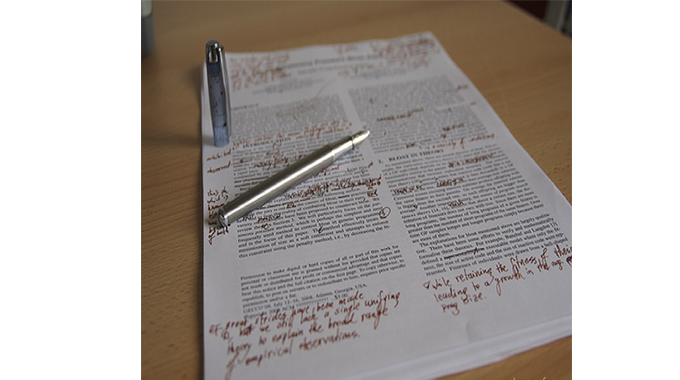
The Sunday News

Continuous Assessment Learning Activity (CALA) is a student assessment system that was implemented in the final term of 2021 in preparation for the 2021 Zimsec examinations.
The first phase of the regime was meant to run from July to September 2021 but was disturbed by the prolonged closure of schools due to the covid-19 pandemic.
However, at the beginning of the final term (September 2021), the Ministry of Primary and Secondary Education (MoPSE) reduced the CALA components from the initial five components to three in response to the limited time available until examination starts.

Examinations
By the way, what is CALA?
CALA is any learning activity or assessment that requires learners to perform, demonstrate their knowledge, understanding and proficiency.
Under the system, Zimsec candidates’ physical and behavioural skills are assessed continuously (coursework) to contribute 30 percent to their final marks. Summative or knowledge skills assessed during examinations contribute 70 percent to the candidate’s final grade.
In simple language, CALA is more of what university students do when they are given assignments (coursework) and the coursework is prepared and graded by their lecturer, however, with CALA moderators are involved.
What are the objectives of CALA?
The CALA system is meant to test and examine three areas, cognitive domain (looking at knowledge domain) and also the psycho-motor and affective domain. The intention is to develop the skills of every learner and allow them to excel in other areas. According to MoPSE, CALAs are meant to introduce situations where assessment is to be holistic and authentic because a learner’s potential is not only what they keep in the head, but involves other skills.
The new competency-based curriculum is now broad, things like sport and visual performing arts which used to be extra-curriculum activities are now part of the curriculum.

Assignments
In summary — Continuous Assessment Learning Area (CALA)
(1) CALA constitute 30% of the Exam mark. (2) 30% is going to be added to the 70% examination mark. (3) Cala components to be handed in on time. (4) Teachers to develop tasks (CALAs). (5) Exam teachers to develop marking guide. (6) CALA to be submitted for standardisation. (7) HODs, Heads and Principals will moderate CALA. (8) Syllabuses are used to develop tasks

Exam teacher
CALA preparation guideline or characteristics
(1) Research-Based. (2) Learners apply knowledge concepts and learn skills. (3) Learners generate knowledge. (4)
Incorporate practical activities, data collection through interviews, questionnaires, observations or experiments. (5)
Should show originality, reactivity and innovation. (6) Promote learning area integration.
(Source: howtolearnanythingonline.blogspot.com)



